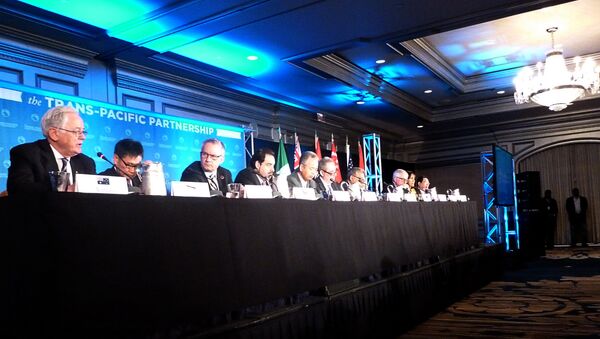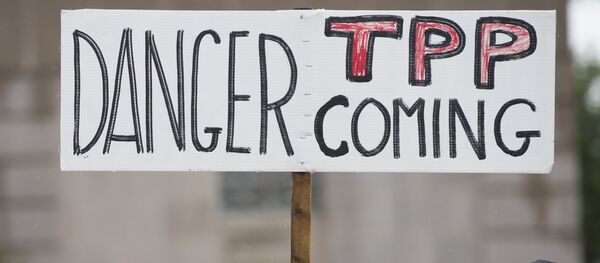On Monday, representatives of 12 Pacific Rim countries, including the United States and Japan as the prime movers, concluded the TPP free trade agreement. The deal, awaiting ratification by its member states, aims to deregulate trade between the United States and countries of the Pacific region. New Zealand is a part of the agreement.
"There will be diversion of trade from outside the TPP area (such as from China, South Asia) as countries like Vietnam and Malaysia buy materials from within the TPP region rather than elsewhere," Bill Rosenberg, policy director at New Zealand Council of Trade Unions, told Sputnik.
Removal of tariffs and government oversight even on sensitive industries, such as pharmaceuticals, will increase prices of medicines and in general goods and services that contain copyrighted or patented material, Rosenberg explained.
After years of secret negotiations, the TPP agreement, if ratified, will introduce tariff free trade between the United States, Japan, Australia, Brunei, Canada, Chile, Malaysia, Mexico, New Zealand, Peru, Singapore, and Vietnam. The agreement encompasses a territory representing approximately 40 percent of global gross domestic product.
There has been considerable opposition to TPP from international organizations and parliamentarians, who have criticized the deal’s secrecy during negotiations, its apparent favoring of multinational corporations and the exclusion of BRICS countries.




